History of Moto Guzzi 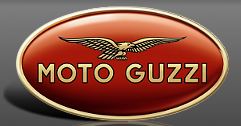
|
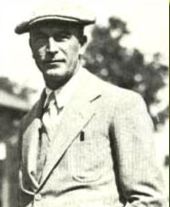 | Crises
often trigger people being inventive and take extraordinary
initiatives for their own way out. That is exactly what happened in
Italy, after the 1e World War had ended and was succeeded by the
economical crisis of the 20's. The country was in poor state, but
-different from other motorcycle companies building cheap and light
vehicles for transportation- technician Carlo Guzzi and his friends
Giorgio Parodi and Giovanni Ravelli, a well-known aircraft test pilot,
developed a high class motorcycle. |
Carlo Guzzi
| | | | |
With
assistance of blacksmith Giorgio Ripamonte they constructed a 500cc
1-cylinder bike with focus on quality and reliability. Parodi,
son of a wealthy ship owner from Genoa, supplied the required
investment capital and the SA Moto Guzzi was established on 15 March
1921 in Mandello del Lario on the borders of the Lake Como. The first
bikes were called "G.P." (Guzzi-Parodi) but this gave some confusion
with Giorgio Parodi's initials. So they decided to use the name Moto
Guzzi. The eagle should be the logo, as a contribution to their friend
Ravelli who suddenly died in a plane crash.
With the first series
of 2 bikes, Typo Normale, Carlo himself already participated in races
because of the expected promotional publicity. In 1921 the first
appearance was 20e place in the race Milano-Napoli, but the following
appearance in the famous Targa Florio in the same year already resulted
in a victory for the Guzzi driven by Gino Finzi. This first success has
been succeeded by no less than 3329 victories -including 11 TT's and 14
world championships- between 1921 and 1957. | 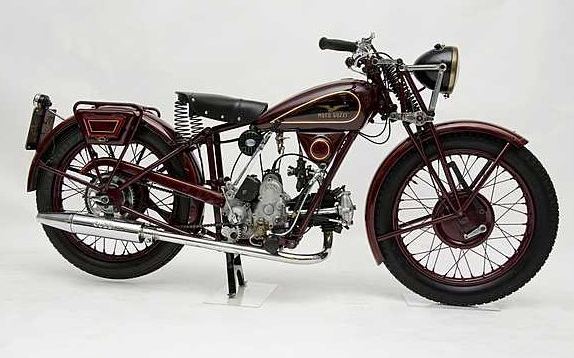 |
| | | | Moto Guzzi Typo Normale
|
| The
engagement with racing also contributed to the standard models. Moto
Guzzi e.g. was one of the first producers building frames with
suspension in 1928. At first, other constructors behaved pretty skeptic
about this development. But when Moto Guzzi succeeded in the 250cc as
well as the 500cc class in the famous TT-races on the Island of Man in
1935 (being the first not UK-bike in 24 years winning this race), the
follow up was granted. |
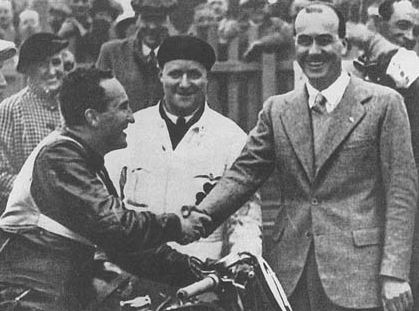
TT Victory Isle of Man 1935
| | | | |
| 1939
came with the introduction of the Airone 250, the most beloved
mid-weight bike in Italy for over 15 years. For racing purposes, this
model was further developed into the Dondolino, Gambalunga and Condor
models. |
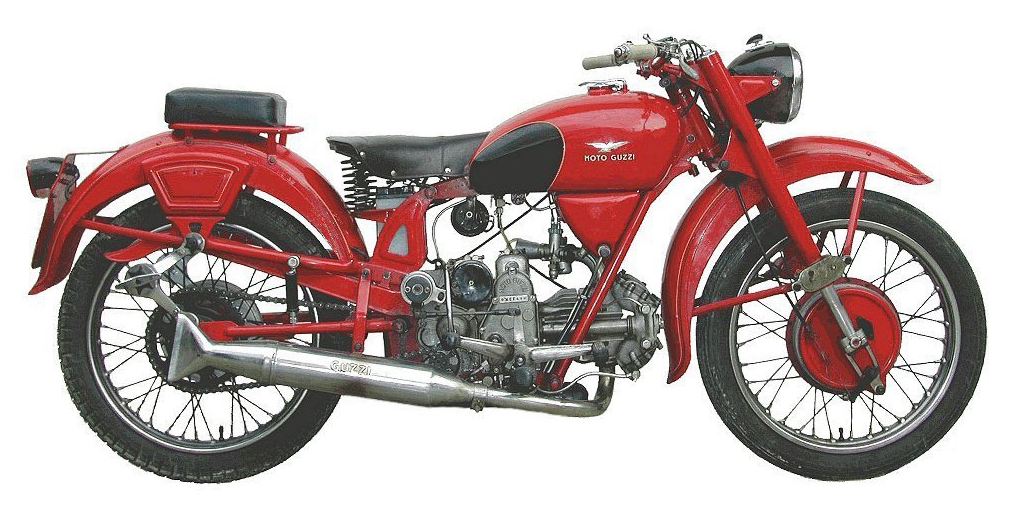 |
Moto Guzzi Airone
| | | | |
After
the 2nd World War, people could no longer afford the big and heavy
luxurious bikes. The country was in need for easy and cheap
transportation. Moto Guzzi responded with developing the 65cc Guzzino
(Cardellino) and its successors the 98cc Zigolo, 175 Galetto and
Lodola. Next to this model line, still some development was done on the
500cc model, resulting in the GTV 500 (Astore) and Facone 500. The
heavy robust single cylinder with agile handling, its technical
features as well as the outboard flywheel remained attractive for the
enthousiasts.
|
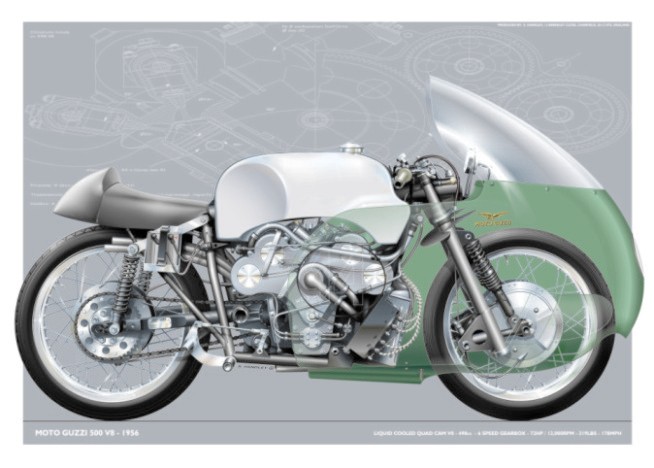 | As
business went well, the technical genius Giulio Carcano designed and
built the Moto Guzzi V8, one of the most outstanding models in history
and without precedent at that time. The possibilities of the concept
were already demonstrated during its first appearance in the Belgian GP
in 1955 and victories in the following year. But in 1957 the company
withdraw from racing, so further development was stopped. This was also
forced by the huge sums of money spent on the development budget,
because tough times were to arrive for the motorcycle industry. Due to
the booming economy and growing wealth, the public started looking for
family cars instead of riding motorbikes. Also with the death of Parodi
(1955) and Guzzi (1964), two icons and driving forces behind the brand
Moto Guzzi had disappeared. Italian government came with the solution of
establishing the SEIMM group, a conglomerate of government controlled
industries. As a consequence, Moto Guzzi had to concentrate on small
bikes like the Dingo and Trotter, but Carcano found some way of
simultaneously developing a brand new concept: the Moto Guzzi V7 in
1967. |
Moto Guzzi V8
| | | | |
This
models was received and sold pretty well, despite being quite different
from the sporty 1-cylinder bikes in the past; the new model was a heavy
2-cylinder cruiser.
But
Moto Guzzi could not conceal its racing history and came out with the
impressive V7 Sport in 1971. Because the US, as a major market, fancied
more the cruiser-type of machine, the company developed the Special,
California and Ambassador for the American market but all based on the
same V-twin engine. | 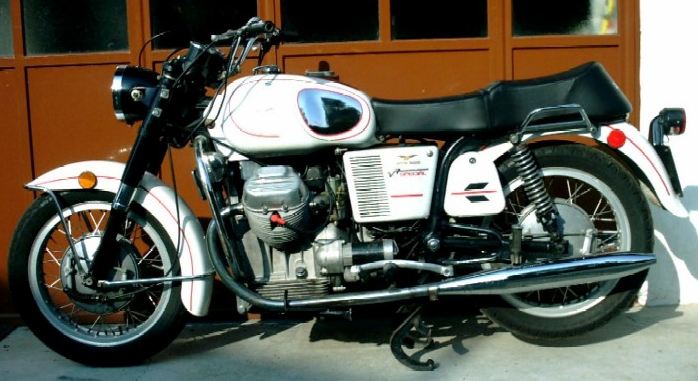 |
| | | | Moto Guzzi V7
|
With
the dismantling of SEIMM, Moto Guzzi was sold in 1973 to Argentinean
Alessandro do Tomaso who took the exploding Japanese models as an
example and developed 4-cylinder line models, varying from 250-500cc.
Because do Tomaso also purchased Benelli (and later Maserati and
Innocenti), this resulted in some Italian badge-engineering where
almost identical engines were used for different brands. Next to that,
Moto Guzzi took the frame of the old V model and put smaller blocks in
like the handy V35 and V50 Monza with Heron technique and belt drive
for the valves.
The 4-cylinder models had only a short life-cycle,
but the small twins proved ancestors of a new range of larger models
like Nevada, Griso Corsa and the new California types.
Because
Alessandro withdraw from motorcycles, the company was sold to Aprilia
in 2004, recently taken over by the Piaggio group. This appears to be a
group with a genuine motorcycle heart, setting high expectations for
the future. A range of new models -still based upon the V7 ancestor-
has been developed since up to 1200cc for the Norge. |
| | | | |


